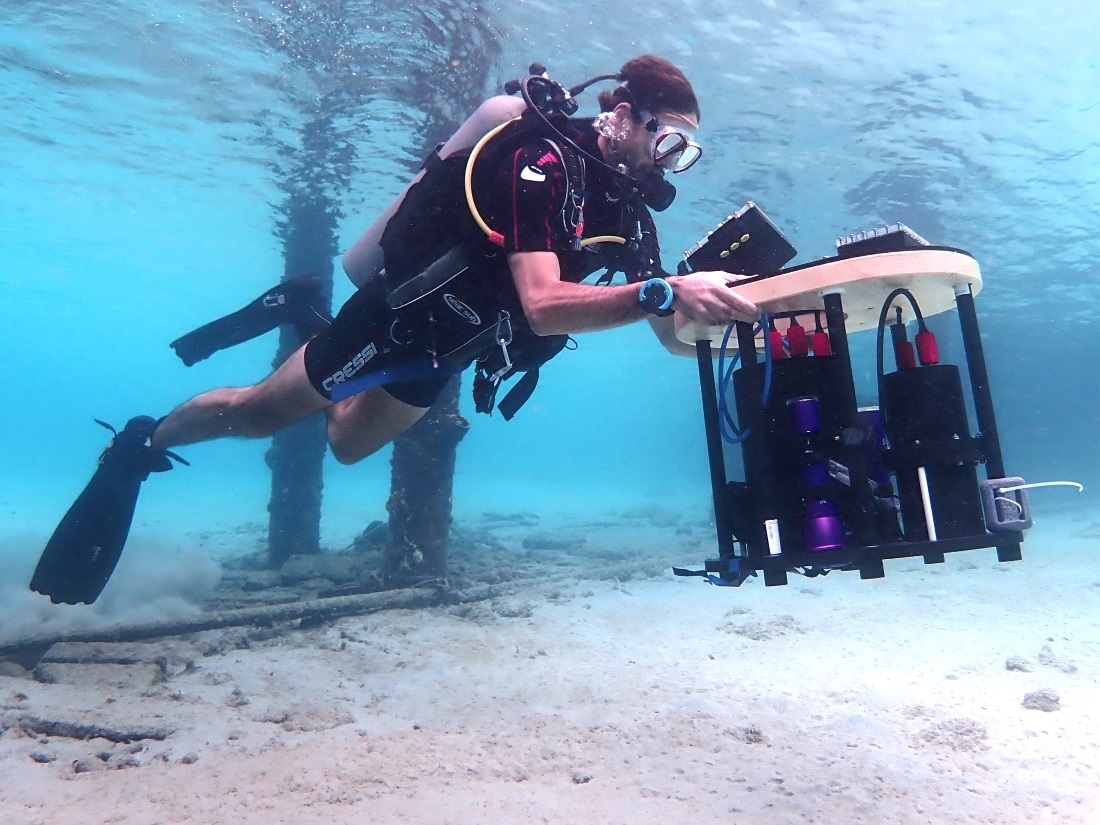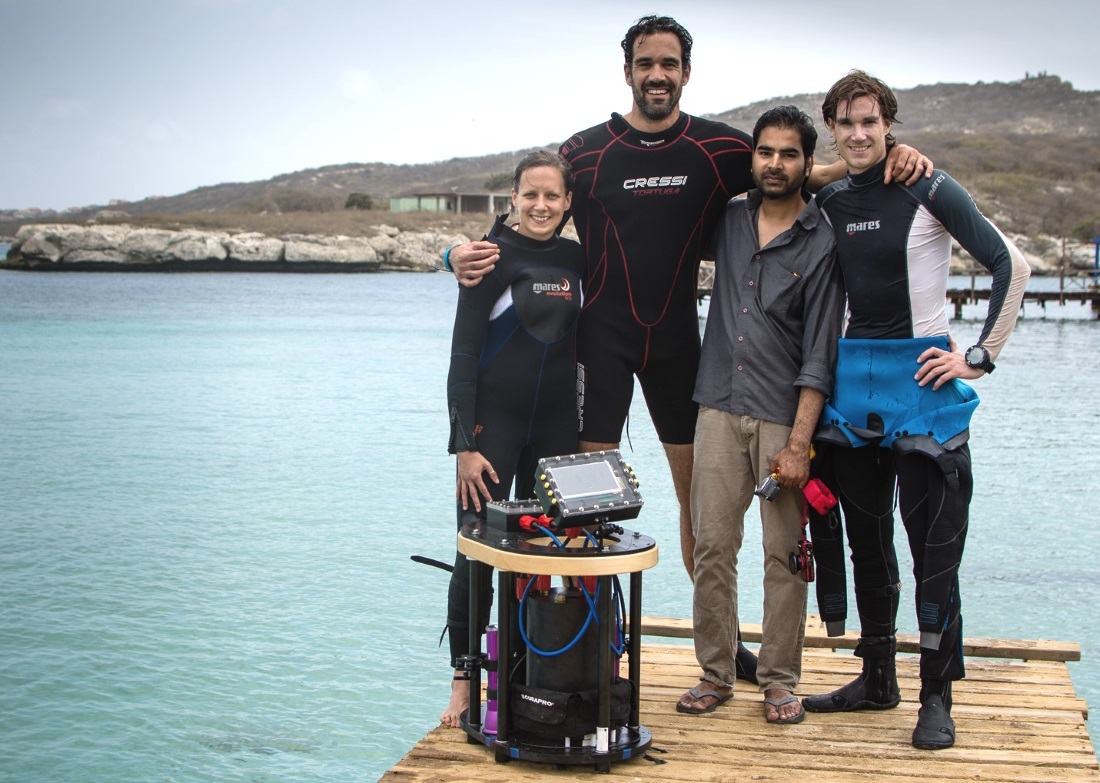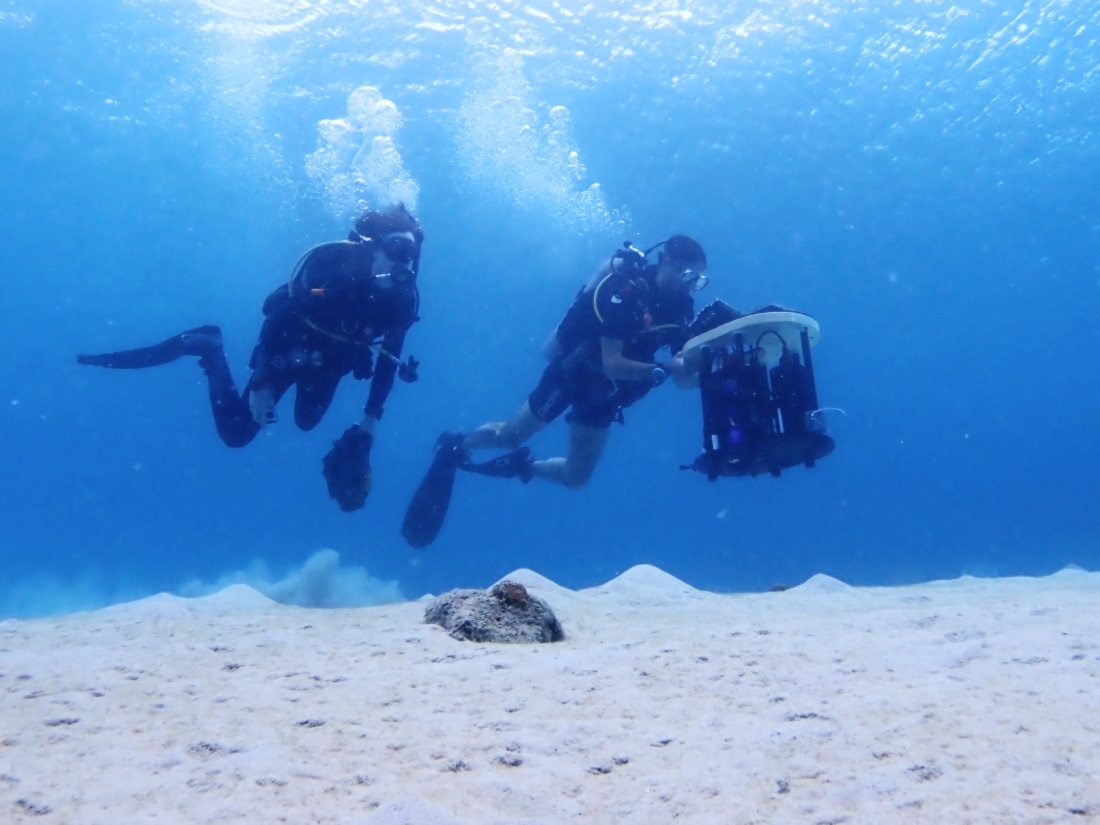Exploring the seafloor with intelligent software
Maritime economy and logisticsTechnology from Bremen start-up company PlanBlue, a spin-off from the Max Planck Institute, is making a new kind of monitoring possible

The depths of the ocean remain one of the last great mysteries on Earth. What is the precise composition of the seafloor? What flora and fauna inhabit it? Where has the delicate balance of the ecosystem been seriously disrupted? We still don’t have complete answers to any of these questions, but four young scientists from Bremen are aiming to change that. They are bringing new seafloor-monitoring technology to the market via their company PlanBlue GmbH (formerly HyperSurvey GmbH) and are currently working flat out to develop prototypes, gain customers from all over the world, and find investors.
Is there such a thing as coincidence? Dr Joost den Haan would prefer to describe it as ‘things coming together nicely’. Looking back over the past ten years, the 35-year old Dutch marine biologist can see that all the pieces of a jigsaw puzzle have gradually fallen into place. Still, he would never have dreamed a decade ago that he would one day be starting a company in Germany. Joost den Haan has been involved in the monitoring industry since 2007 and is passionate about diving, which he does both for scientific purposes and for pleasure. His doctoral thesis was written in Amsterdam and Curacao on the subject of coral reefs, but he found that documenting plants and assessing the situation under water was “ridiculously time-consuming, and processing all the data was a lot of work.”
His epiphany came eight years ago while on a dive with some students. They were meant to be objectively assessing the dive site. “It was at a spot where the coral reef was only about one per cent intact. There was virtually nothing there apart from microbial mats and algae. But when the students assessed the condition of the reef as ‘good’, it was immediately clear to me that we had to find a completely new method of analysing the seafloor and presenting the information in such a way that even people with little background knowledge would be able to see what a poor state the underwater world is in,” explains Joost den Haan. The idea stayed with him and when his path - or happy coincidence - took him to Bremen and the Max Planck Institute (MPI) three years later, his vision became reality. One day while he was in the library, working on an article for a scientific publication, he was contacted by a research group who needed a specialist in coral reef species to contribute subject expertise to an intelligent software application. Joost den Haan was introduced to a new technology, and spotted its potential immediately.

Passionate about the underwater world
Joost den Haan is now co-founder and managing director of PlanBlue. The four-strong team received support in the form of the EXIST start-up grant, “and without this backing we would never have dared to take the risk of striking out on our own,” he says, speaking for the whole team. Finding this team was another of those lucky coincidences. The threads came together in the MPI and the Technology Park in which the university is located. Raja Kandukuri (29) is a hardware expert. “He’s always tinkering with machines,” grins den Haan. People at the institute thought they would be a good fit – “and they were right.”
After designing two predecessor versions for the Max Planck Institute, Kandukuri, an electrical engineer, is now working on the prototype for the new company’s own product, named ‘DiveRay’. It is a specialist underwater camera that can be used to scan the sea bed. Den Haan has just come back from testing the camera on Curacao. At the heart of the camera is its intelligent software, which could not have been developed without expert Guy Rigot (36). Like Joost den Haan, he is originally from the Netherlands and worked for a number of years for an aerospace company in Bremen. Over a beer, the two men decided they would like to work together and Rigot started looking downward instead of upward. The final member of the team is Dr Hannah Brocke (36), a marine biologist specialising in business development and fundraising. “She is able to provide a different perspective on many things, which is immensely valuable to us,” says Joost den Haan, for whom she is not just another expert, but also his business partner. The language of the team is English – as universal as the global customer base they are aiming for.
Idealism plays a part
Recent images of dead and dying fish provide a forceful illustration of how plastic waste destroys valuable habitats and has no place in the ocean. “We want to do something useful and show how important the underwater world is for the human race,” stresses den Haan. But sustainability is just one aspect of their work. A good 95 per cent of the seafloor is still unexplored – “lots of scope for our technology, from which many sectors of industry can benefit.”

The ‘DiveRay’ designed by the Bremen entrepreneurs offers a faster and more cost-effective method of mapping the sea bed and obtaining detailed information. The company has developed a computer program that can be used to generate accurate maps and objective information. They also use hyperspectral imaging technology. “This has already been used very successfully in space to gather complex data and information. Now we are opening up the sea bed to scrutiny,” explains Joost den Haan, adding: “We don’t yet have a clear picture of what lies below the surface just two kilometres off the coast.”
Start-up grant and accelerator funding is enabling the company to grow
The founders are spreading their wings. They have recently moved on from where everything started at the Bremen Max Planck Institute for Marine Microbiology and have found a place of their own just a few hundred metres away at Bremeninvest’s Bremen Innovation and Technology Centre (BITZ). The move was necessary, and puts the new business on a more professional footing. The company receives additional funding from the Berlin-based Climate KIC programme, along with coaching on matters such as business plans, and strategic business development. This non-financial support in particular has benefited the whole team enormously: “We travel a lot, and now have professional support in our meetings with (potential) customers and investors.”
Negotiations are currently ongoing in France, the US, the Caribbean, and in Germany. Meetings have also been scheduled in New Zealand at the end of the year. Den Haan is finding there is a lot of interest out there. No wonder: “It is completely new technology for the monitoring market that no one else can supply, and therefore has huge market potential.” Private companies, public authorities and NGOs can benefit from the maps generated by the ‘DiveRay’. Environmental consultants are a particularly important group for the PlanBlue team at present. They use the technology in their work and can carry it over into their networks.
Publicly accessible marine databases
The aim is to educate the wider public on the state of the world’s oceans, and to create a science-based standard library for the sea bed. The structures are there - the task now is to fill them with content. “Our system needs information: the more, the better.” And the DiveRay needs someone to operate it. It is currently being used for dives up to 30 metres, and, as experienced divers, den Haan and Brocke are still instructing customers in its use. A prototype has been produced that paves the way for further development through to full production. “We want to build a good product that uses and builds on the lead we have in the area of software,” says den Haan. They currently only have one competitor, a company that has chosen to focus on the deep sea. The long-term goal of the great PlanBlue adventure is to create an automated system. The four founders don’t plan to leave this to chance. They are working towards their goal every day and firmly believe that they “are in the right place at the right time.”
Further information on company start-ups can be obtained from Ole Bast, Innovation Manager, Ministry of Economic Affairs, Labour and Ports, P +49 (0)421 9600 - 334, ole.bast@wah.bremen.de.
Are you looking for a place to realize your business ideas? Information can be found at Brigitte Klesse, Centre management, Technology and start-up centres, P +49 (0)421 2208-112, brigitte.klesse@wfb-bremen.de.
Information on locating in the Bremen Technology Park is available from Anke Werner, Project Manager region Bremen East , P +49 (0)421 9600-331, anke.werner@wfb-bremen.de.
Success Stories
For the last 18 years, the German Research Center for Artificial Intelligence (Deutsches Forschungszentrum für Künstliche Intelligenz) in Bremen has been at the forefront of research into artificial intelligence, robotics and cyber-physical systems. The researchers are developing innovative solutions that will help human beings, whether on land, sea, in the air or in space.
Learn moreInto the flowerbed instead of the trash: the products from Bremen-based Scribbling Seeds turn discarded office and advertising materials into tomatoes, basil or sunflowers. Founder Anushree Jain is certain that this is the way to a more sustainable office.
Learn moreBremen is Germany’s sixth-largest industrial hub in terms of revenue. Whether the sector is aerospace, food, automotive, shipping or steel production, Bremen has always been a major player.
Learn more
